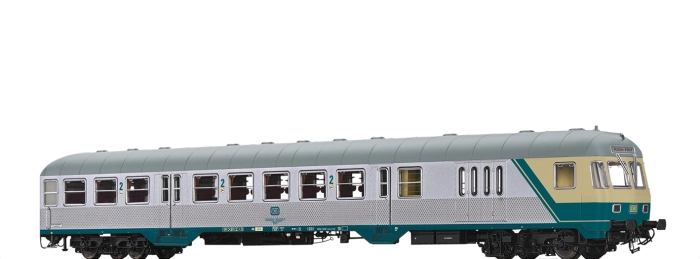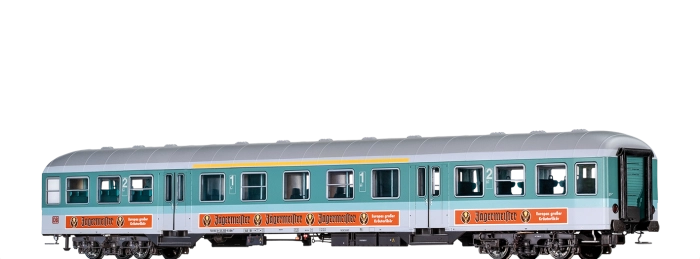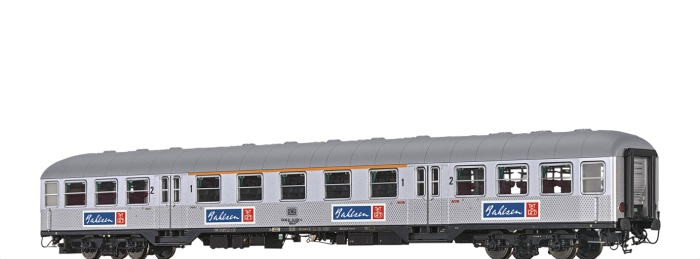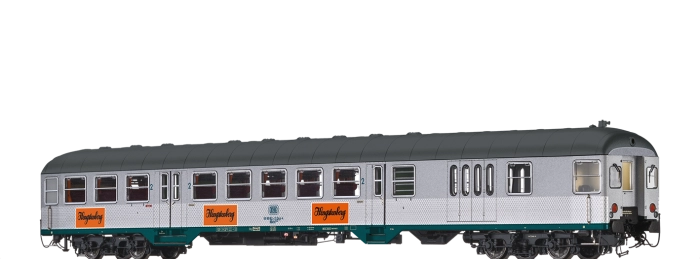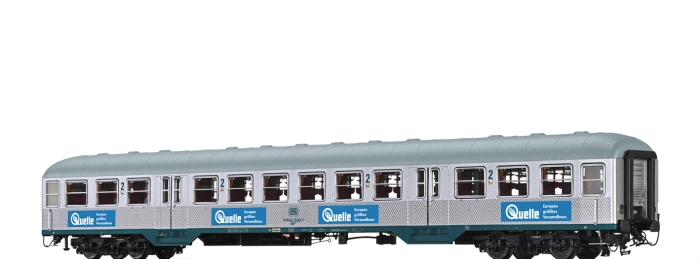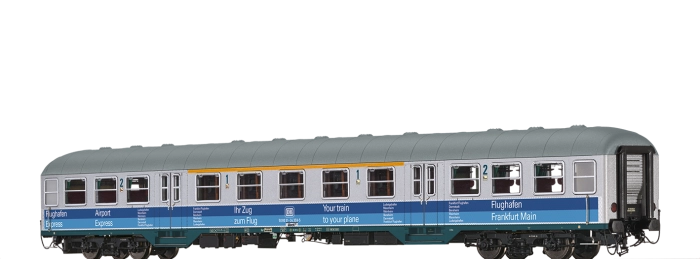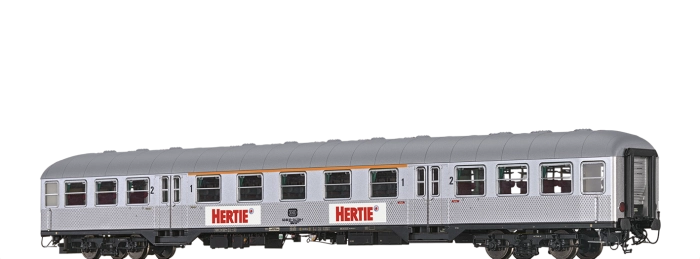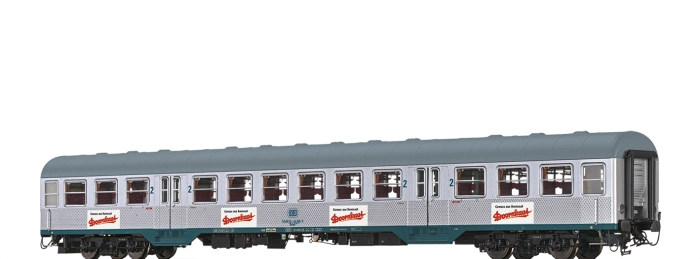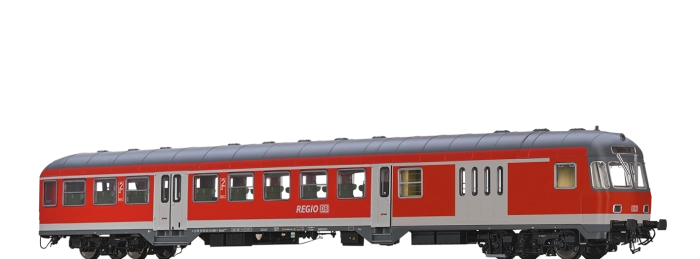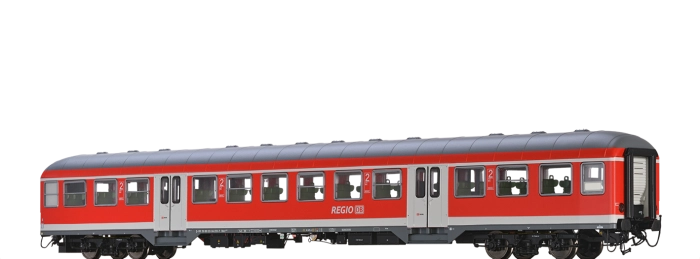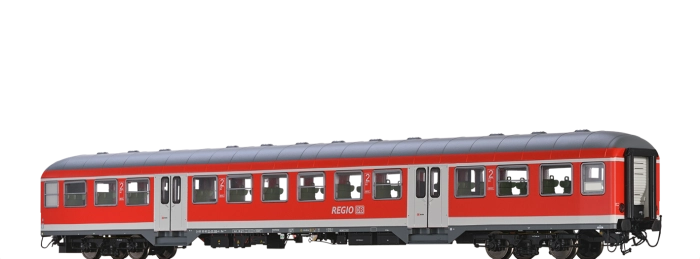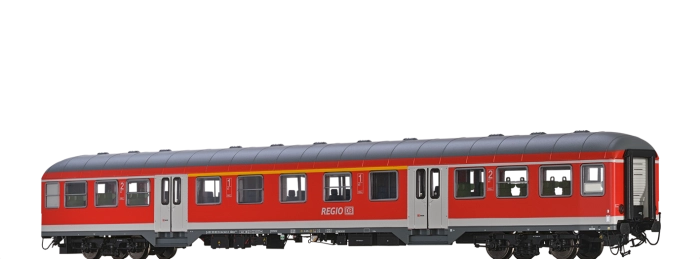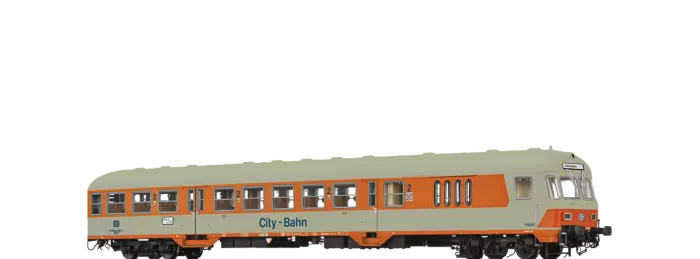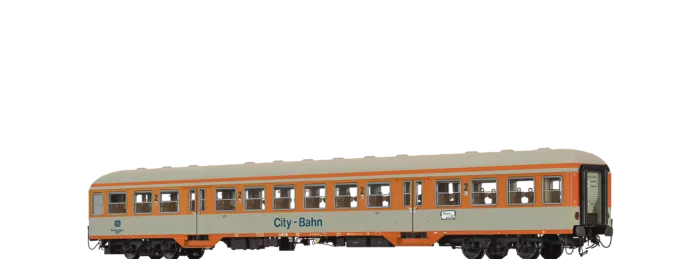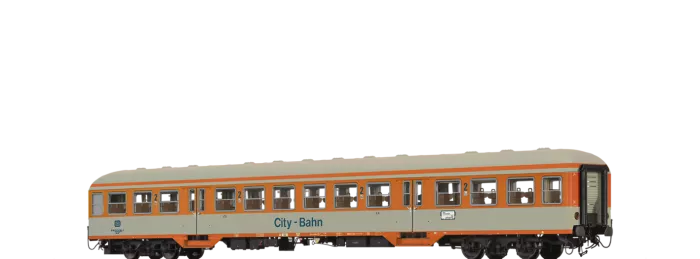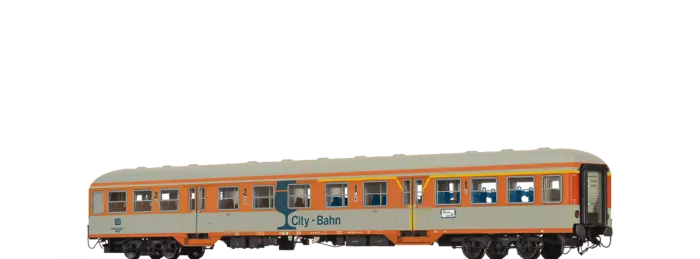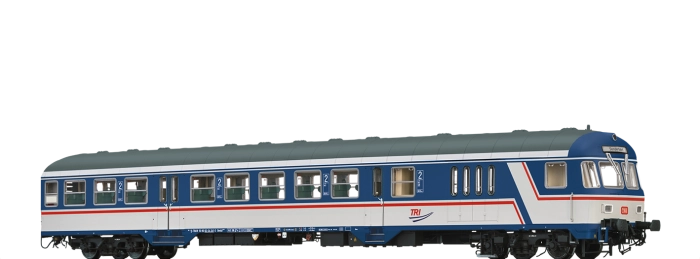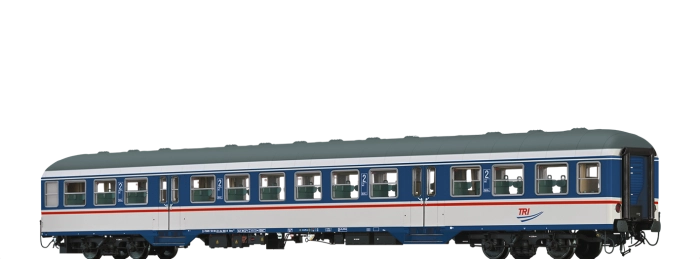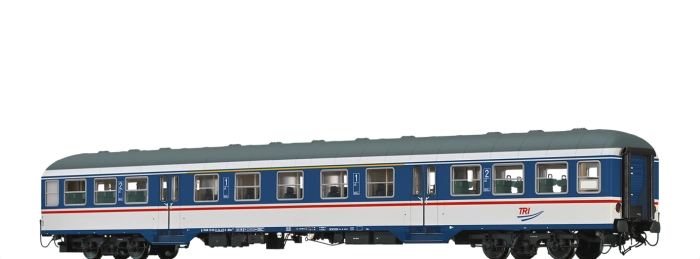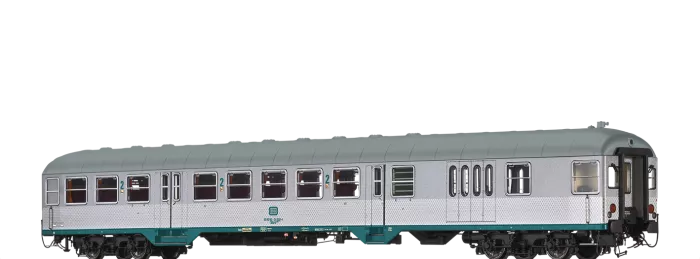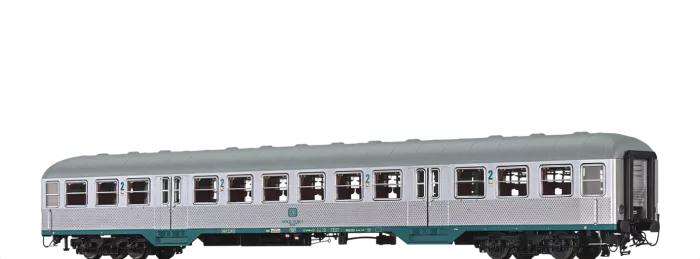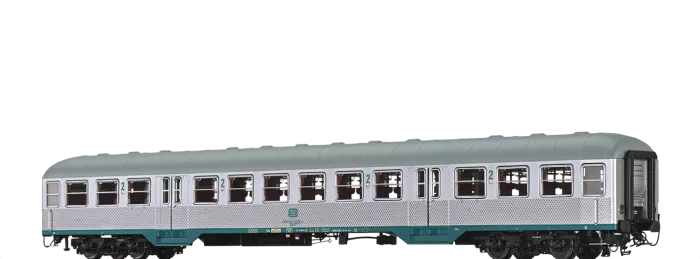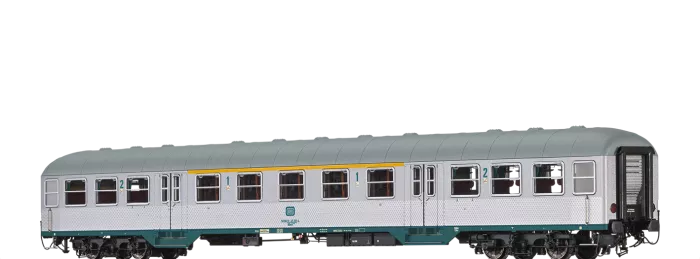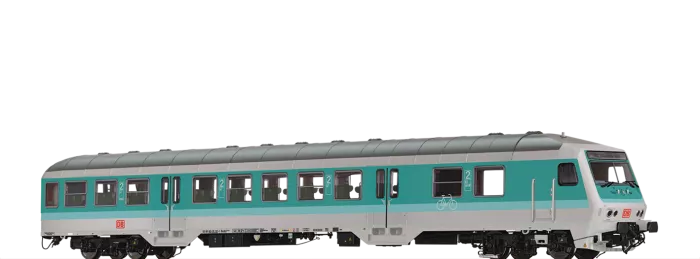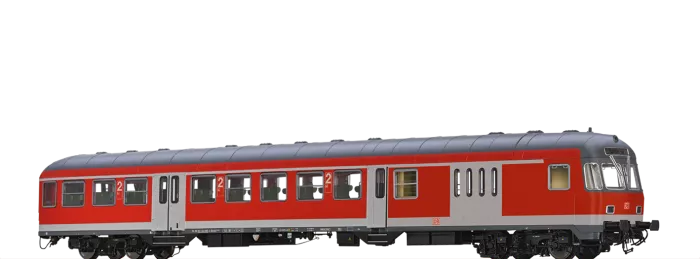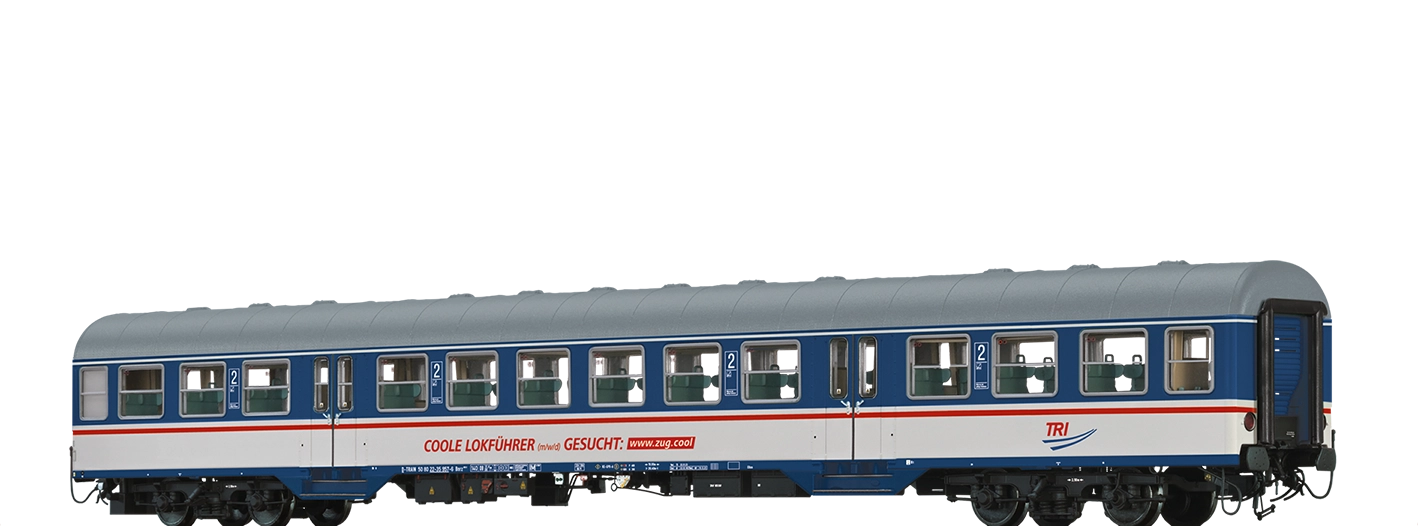
Passenger Coach Bnrz450.3 TRI
Road no.: 50 80 22-35 957-6
Model details
- True to original construction differences on the roof and car bottom
- Multi-part brake system
- True to original interior fitting
- NEM-standard short-coupling
- Precise replica of roof welds
- Metal axle holders
- Finely engraved details
Downloads
Info about the original
The conversion programmes for 3yg- and 4yg coaches allowed the German Federal Railway to address the shortage of coaches caused by the war for the first time from the mid-1950s. However, the construction programmes were limited initially to developing urban rapid transit and express train coaches. Following this, the German Federal Railway created capacity for developing new commuter coaches (n-coaches). The constantly growing demand for increased traffic volume and the fact that the 3yg had only been designed for a short service life, led to the appearance of the first prototypes for the new n-coaches in 1958. Based on the findings of the preceding new developments and prototypes, three basic types emerged with five 1st class compartments in the centre of the coach and two large 2nd class cabins (AB4nb), three large 2nd class cabins (B4nb) and two large 2nd class cabins and baggage compartment with space for the train conductor (BD4nf). Although prototypes had also been trialled with side panels made from aluminium, standard steel and corrugated side walls, metal panelling made from stainless steel (V2A) was eventually chosen for mass production. Since the coach paintwork corrosion protection was not required for this material, the n-coaches were abraded under the windows using a peacock eye pattern. This abrading pattern and the silver surface of the V2A quickly earned the n coach the distinctive nickname “Silberlinge”. Except for a few models fitted with lightweight design Minden-Deutz bogies, the n-coaches were fitted with block brakes (MD42), which were replaced with disk brakes (MD43) in later series. In order to change passengers as quickly as possible, the otherwise common end entrances were abandoned and positioned approximately a third of the way along the coach as double entrances with hinged-folding doors. The basic design of the n-coach proved so successful that between 1960 and 1980 a total of about 5000 coaches were constructed by different coach manufacturers as well as at the Karlsruhe and Hannover refurbishment facilities (Aw). At first, conditions in the extremely cramped conductor’s space in the BD4nf were less than ideal, and it was soon nicknamed the “rabbit hutch” by staff, leading to discontent and safety concerns. As a result, Aw Karlsruhe rebuilt the conductor’s cab, producing a control car in 1972 with a fully-fledged conductor’s cab without any through access to the next coach. These changes meant that the Karlsruhe version differed significantly from the previous “rabbit hutch” with its passageway between the coaches. From the mid-1980s, the Federal Railways started to modernise coaches that were in some cases already 20 years old. Following several design studies, the positive features of the individual programmes were combined at Aw Hannover in the new Hannover design. New features also consisted of the mint green paintwork or new sliding windows with plastic frames. This design, which was also installed by PFA Weiden or OFV Verona using alternative interior colours, can still be found in modern n-coaches that have been painted in the DB AG corporate colours. Other conversions were performed on the control cars. The two designs that had been introduced earlier were only suitable for either diesel or electric traction, depending on the control panel installed. For this reason, a new conductor’s cab was designed at Aw Wittenberge, based on the DB standard driver’s cab of the BR 111, so that the control cabs could be deployed with greater freedom. Numerous “rabbit hutches” and also Karlsruhe versions were subsequently converted to the Wittenberge model. In order to meet the demand for push-pull trains, DB AG also included standard 2nd class coaches in the conversion programme.



